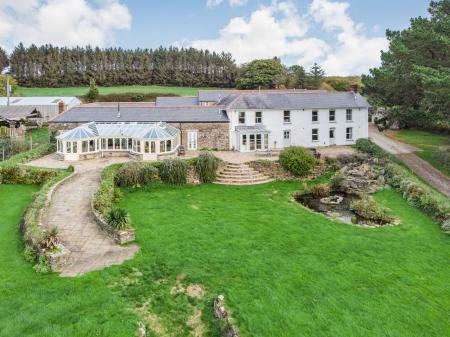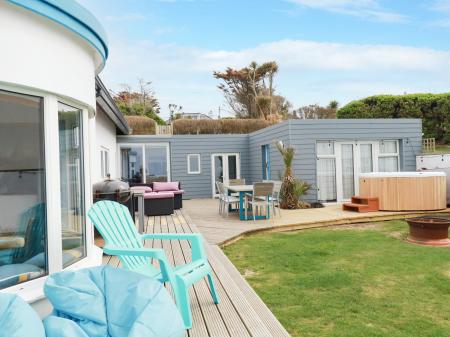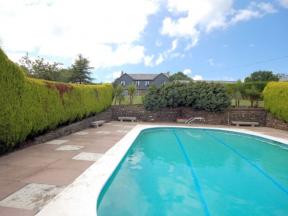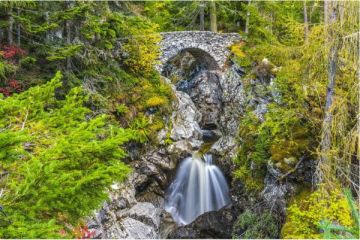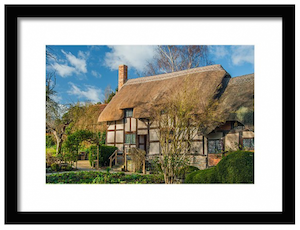In an earlier article I looked at 10 Beautiful Stately Homes within easy reach of London, but did you realise that there are dozens of historic houses inside the M25?
Many of these historic places were built as rural retreats, a place to escape from the hustle and bustle of life in central London, but over time the city grew larger and enveloped the country estates on its borders, leaving many stately homes stranded as small islands in a sea of urban surroundings.
The historic houses on this list are easily reached by public transport, but many are set in large gardens and grounds.
This article was going to be just the top 10 historic houses in London, but after agonising over my final choice I gave up and added one more to make it a top 11 list instead! So without further ado, here are our 11 favourite historic houses in London - plus a few alternatives that didn't quite make the final cut.
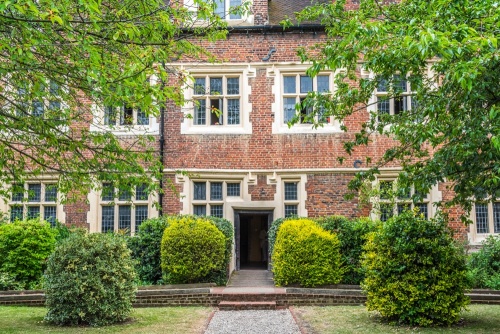
Was the Gunpowder Plot hatched at Eastbury Manor House in Upney? So says a local tradition supported by the author Daniel Defoe. Eastbury is a delightful Elizabethan Manor house. Another tradition says that the house is haunted by the ghost of a young girl.
We are on firmer historical ground when it comes to the history of Eastbury Manor. The estate was owned by Barking Abbey in the 14th century but after Henry VIII suppressed the abbey Eastbury was sold to a wealthy merchant named Clement Sysley.
In 1557 Sysley built the red-brick manor house we see today. Highlights include the Painted Room, which boasts a fabulous 16th-century wall painting of a fishing scene. Then there is the Long Gallery with its original Tudor fireplace and the Summer Parlour, still with its Tudor door.
The manor house is owned by the National Trust but leased by the Barking Borough Council.
Nearest underground station: Upney
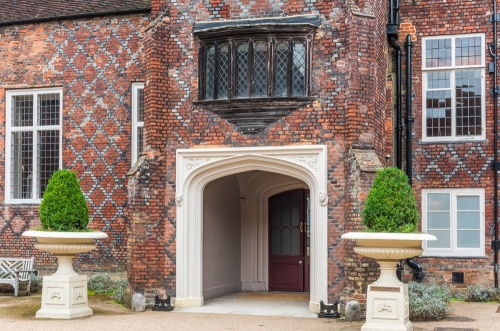
This delightful complex of historic buildings on the River Thames has been the country residence of the Bishop of London since the 11th century, though the Bishops have owned the estate since around 700 AD. The Palace boasts the longest moat in England and is set in superb 17th-century gardens. It was here that Bishop Henry Compton grew the first coffee tree in England sometime after 1675.
Occupying a suite of Georgian rooms in the Palace is a fascinating museum that tells the story of the Bishops of London and the development of Fulham Palace, and displays a wealth of objects including pieces of medieval stained glass, craved fragments from the Palace, Roman coins and other archaeological finds from the site.
Visitors can enjoy the Tudor great hall, the Victorian chapel, and the 16th-century entrance courtyard. Many of the Bishops of London are buried in Fulham All Saints Church, just outside the Palace grounds.
Nearest underground station: Putney Bridge
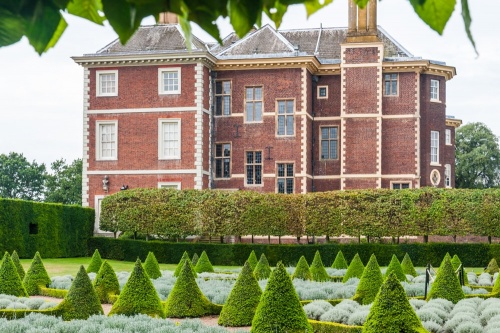
This delightful Stuart mansion of red brick stands on the banks of the River Thames in Richmond. Ham House was built in 1610 and later the home of the Earl of Dysart, who served in his youth as Charles I's whipping boy (whenever the king-to-be transgressed, Dysart received the punishment on his behalf).
When the two men grew up Charles showed his gratitude by giving Dysart a lease on Ham House, which was then a rural retreat on the edge of London. The Earl's daughter Elizabeth successfully navigated the Civil War period by appearing to support Parliament whilst secretly sending messages to Charles II in exile abroad. She was given Ham House outright when the monarchy was restored after the war.
Elizabeth married John Maitland, the Duke of Lauderdale and together they transformed Ham House into one of the most beautiful and luxurious Restoration houses in England. They created a showpiece home, filled with fine art and furniture and set in superb formal gardens. Look for the Bath Room, one of the very first purpose-built rooms for bathing in England.
The Duchess of Lauderdale is said to haunt Ham House, and she is joined by a plethora of other spectral beings, making Ham House among the most haunted houses in Britain.
Nearest underground station: Richmond
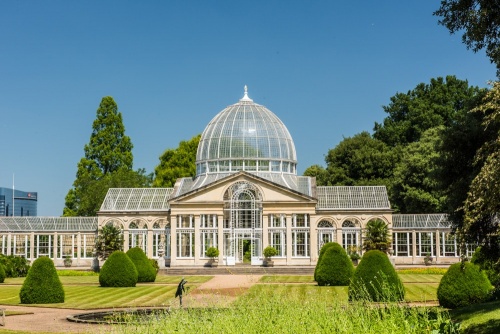
Syon stands on the north bank of the River Thames in Brentford. It began as a 15th-century nunnery of the Brigittine order, but after the nunnery was suppressed by Henry VIII the estate passed to the powerful and ambitious Duke of Somerset.
The Duke transformed the earlier monastic buildings into a palatial house in Italianate style, but after his abrupt fall from power in 1552 Syon was seized by his rival the Duke of Northumberland. It was here at Syon that Lady Jane Grey was offered the crown of England following Edward VI's death.
Like his great rival the Duke of Somerset, the Duke of Northumberland's schemes came to nothing and he too was executed for treason. The house was eventually purchased by Henry Percy, the 9th Earl of Northumberland, and the Percy family still own it today.
In 1766 a descendant of the 9th Earl was named the 1st Duke of Northumberland. He called upon Robert Adam, the greatest country house architect of the day to transform the interiors of Syon. The result is a masterpiece, a stunning neo-classical arrangement of rooms built off an awe-inspiring entrance hall dominated by the iconic statue of The Dying Gaul.
The house stands in 200 acres of parkland laid out by Capability Brown, with 40 acres of garden and n ornamental lake. A later addition was the Great Conservatory, an astonishing building of metal and glass erected in 1831.
Queen Victoria knew the Great Conservatory well. She spent six years at Syon after the 3rd Duchess was named as her Governess.
Nearest underground station: Richmond
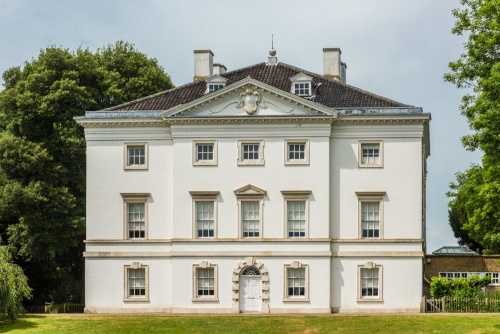
This delightful little Palladian villa on the bank of the River Thames in Twickenham was built in 1724 for Henrietta Howard, mistress of George II. Poet Alexander Pope helped design the 66-acre garden along with the famous landscape architect William Kent.
Mrs Howard was a noted society hostess and a friend of many of the most learned scholars in Britain. Marble Hill House was intended as a place to entertain small groups of these friends, who gathered in the Great Room on the first floor. The interiors are luxurious and elegant, beautifully furnished with fine art and furniture. look for the hand-painted Chinese wallpaper in the dining room.
Outside the gardens is a secret grotto decorated with coloured glass, painted shells, and pieces of coral. Nearby, half-hidden in the shrubbery, is an 18th-century ice house, used to refrigerate perishable goods in the days before refrigerators.
When Marble Hill House was built in the early 18th century the stretch of the Thames between Richmond and Hampton Court Palace was lined with similar fashionable villas. Marble Hill House is the last one remaining and is a picturesque reminder of a bygone age.
Nearest underground station: Richmond
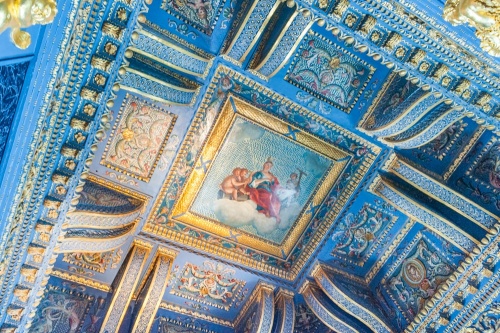
Richard Boyle, 3rd Earl of Burlington, was one of the most famous figures in 18th-century British art, architecture and landscape gardening, yet most people have never heard of him. Lord Burlington was fascinated by the classical art and architecture that he encountered on his Grand Tour of Europe.
When he returned to Britain he decided to create his own version of a Palladian villa in Chiswick, which was then a rural area within easy reach of London. Burlington acted as his own architect and created an astonishing neo-classical masterpiece, mixing Greek and Roman design under a dome modelled n the Pantheon in Rome.
The result is unlike any other English building before or since, and it is stunning. Chiswick House had no kitchen, so it obviously wasn't meant as a residence. It was, rather, a space for entertaining, with a picture gallery, library, and rooms intended to show off Burlington's art collection.
Lord Burlington extended his vision to include the landscaped gardens that surround the house. Within the gardens are statues, obelisks, neo-classical temples, water features such as a canal, cascade, and pond, and a semi-circular Excedra, a curving hedge decorated with statues of Caesar, Cicero, and Pompey.
Lord Burlington's gardens at Chiswick House set the standard for English landscape gardens popularised by Capability Brown and his followers just as his neo-classical design of the house was the forerunner of country house design for at least the next century. It is impossible to overstate the influence of what Burlington accomplished at Chiswick House.
Nearest underground station: Turnham Green
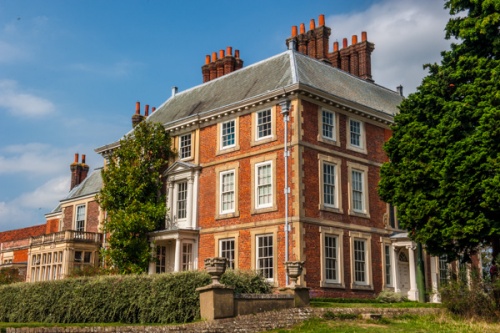
Forty Hall is a beautiful red-brick mansion built in 1629 for Nicholas Rainton, a wealthy merchant who rose to become Lord Mayor of London. In the early 17th century this area of Ealing was a countryside retreat, far from the noise and bustle of London. Rainton made a fortune importing buttons, bows and other clothing decoration, and decided to build a house to reflect his wealth and social standing.
Here he entertained the great and the god of London society. Rainton was a Royalist, but he was also a man of principle, so when Charles I asked him to help raise extraordinary taxes from wealthy London merchants, Rainton refused and was thrown into the Tower of London. The public outcry was so great that the king was forced to release him.
Forty Hall is now a museum for the Borough of Enfield, who use the beautiful 17th and 18th-century rooms to showcase a changing programme of exhibits on local history.
The Hall features beautiful Jacobean plasterwork ceilings, ornately decorated fireplaces and fabulous architectural detailing. In the grounds is a small walled garden where you can see a recreated medieval knot garden flanked by red and white roses as a reminder of the Wars of the Roses and the Battle of Barnet, which took place near Enfield in 1471.
Also in the grounds of Forty Hall are the remains of Elyng Palace, once owned by Henry VIII. It was here at Elyng Palace that Prince Edward, soon to become Edward VI, and his elder sister Elizabeth, later to become Elizabeth I, heard the news of Henry's death.
Nearest underground station: Oakwood (3 miles). London Overground from Enfield Town, Enfield Chase or Southbury then 191 bus to Forty Hill.
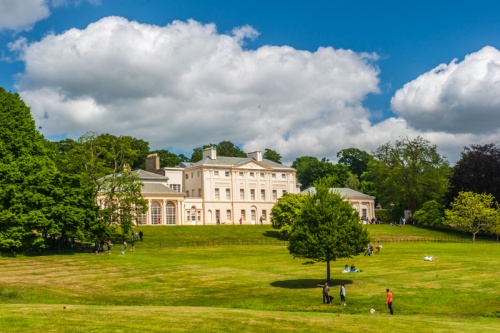
Kenwood House is a stunning stately home designed by Robert Adam from 1764. The house stands in beautiful parkland in the northern part of Hampstead Heath.
The first house at Kenwood was built by William Brydges around 1694, but around 1764 William Murray decided to remodel the old house and create a villa for occasional entertaining. Murray, later named the 1st Earl of Mansfield, gave his architect free reign, and the result is one of 18th century England's greatest historic houses.
Adam had a hand in the layout of the parkland, too, with carefully designed vistas to Greenwich and the dome of St Paul's Cathedral in the distance (though the surrounding trees now obscure some of the views).
Murray was forced to make Kenwood his main residence after rioters burned his London house during the Gordon Riots of 1780.
Today the house is used as a public art gallery, with works by such artists as Gainsborough, Vermeer, and Angelica Kauffman. The most valuable piece of art on display is a self-portrait by Rembrandt.
Nearest underground station: Highgate
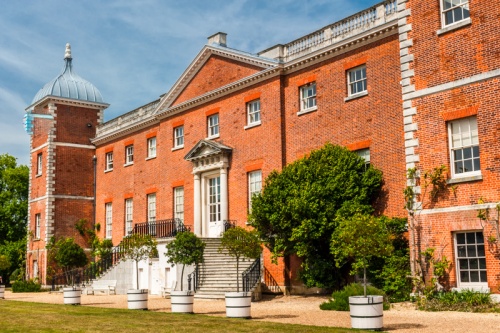
From Kenwood to another of Robert Adam's masterpieces, Osterley Park in Hounslow. This stunning 1761 house was designed for the founder of Childs Bank on the site of a Tudor mansion. The 16th-century stables still survive but the rest is pure Adam, with opulent rooms in neo-classical style.
The highlight is the Etruscan dressing room, inspired by Etruscan vases from the collections of Sir William Hamilton. Adam designed not only the decoration but also the domed state bed. A delightful story says that when Child got Adam's bill for the state bed he tore it up so that no one would ever discover how much he had paid!
The house is full of fine art and furniture, ceramics, glassware and tapestries.
Adam's interiors remain practically untouched, making Osterley Park one of the best examples of an unaltered 18th-century stately home in Britain. Adam also had a hand in the 6 acres of gardens that surround the house, including a neo-classical summerhouse. Look for the Temple of Flora, another neo-classical garden feature.
Nearest underground station: Osterley
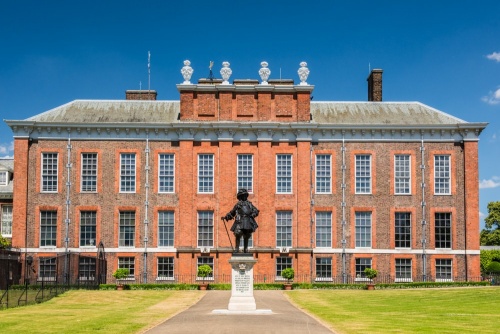
Though Kensington Palace is best known for its role as a royal palace and childhood home of Queen Victoria, this elegant red-brick house on the edge of Kensington Park began as a simple 2 storey house built in 1605 for Sir George Coppin. When Coppin built his house Kensington was little but farmland, far from the noise and squalor of central London.
In 1689 King William III bought Kensington House as a country retreat - an escape from the pressures court life and a place far enough from the River Thames to ease his asthma. Sir Christopher Wren and Nicholas Hawksmoor transformed the house into a residence suitable for a monarch, but very much favouring comfort over prestige.
The Palace was expanded by William Kent for George I in 1722. Kent designed a suite of lavish state rooms; the Privy Chamber, Cupola Room, and King's Drawing Room. He also created the astonishing King's Staircase, with its extravagant gilded ceiling and trompe l'oeil Italianate wall paintings.
George II was the last monarch to live at Kensington Palace. After his time the Palace was used as a residence for members of the royal family. One famous resident was Diana, Princess of Wales.
Queen Victoria was born at Kensington Palace and spent much of her childhood here. Kent's Dressing Room and Queen Victoria's Bedroom have been redecorated to reflect how they might have looked when Victoria grew up at Kensington in the 1830s. The State apartments are stunning, but for me, the most impressive part of the Palace is the Cupola Room, with its remarkable gilded ceiling and chandelier.
Nearest underground station: High Street Kensington
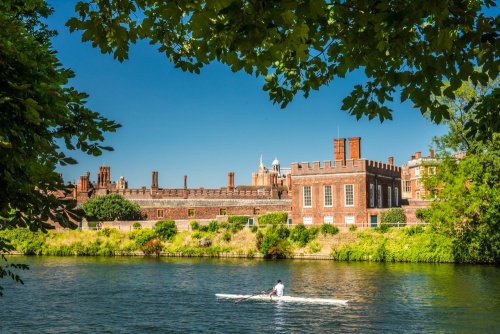
Around 1338 the Knights Hospitaller of St John built a house at Hampton, a rural village on the River Thames. In 1514 Cardinal Thomas Wolsey bought the estate and began to build an opulent residence suitable for the most powerful man in the kingdom after the king himself.
Wolsey added a suite of ornate rooms to entertain the king and his court, and here at Hampton Court he lived like a king himself. Wolsey spared no expense; he hung the walls with hundreds of expensive tapestries, which were changed every week.
But Wolsey was dependent on keeping the king's favour, and when the king cast a covetous eye on Hampton Court Palace Wolsey found it expedient to offer it to Henry. The king spent even more money on the Palace, adding luxurious quarters for his second wife, Anne Boleyn, royal council chambers, a great hall, and royal kitchens.
He built private quarters with hot and cold running water - an extraordinary luxury for the time - a real tennis court and two bowling alleys. Another Tudor legacy is the ghost of Catherine Howard, Henry's fifth wife, who is said to linger in the Haunted Gallery.
The Tudor palace was transformed under William and Mary when Sir Christopher Wren was called in to remodel the Tudor palace in Baroque style that would rival Versailles Palace in France. Perhaps the most impressive part of this second phase of building at Hampton Court is the King's Staircase, featuring fabulous murals in classical style by Antonio Verrio.
Though the Palace interiors are worth exploring, don't miss the gardens! Behind the King's Apartments is the Great Fountain Garden, designed in 1689 out of Henry VIII's hunting park. Near the Privy Garden (a private garden for the monarch) is a greenhouse housing The Great Vine, planted by Capability Brown in 1768 and the oldest known vine in the world. Then there is The Maze, the oldest hedge maze in the world, planted in 1700 and immortalised in Jerome K Jerome's popular novel 'Three Men in a Boat'.
Nearest underground station: Richmond (4 miles). Far better is London Overground to Hampton Court.
Honourable Mention
Ooh, it was hard to eliminate these four wonderful houses but I couldn't finish without mentioning them. First up is Spencer House, overlooking Green Park just a stone's throw from Buckingham Palace. This elegant house has been the London home of the Spencer family of Althorp Park for hundreds of years. What a location!
Then there is Pitzhanger Manor in Ealing, designed by the Regency architect Sir John Soane. In Brentford is lovely Boston Manor, a lovely Jacobean house created in 1623 and featuring superb Jacobean strapwork ceilings.
In Acton Town is Gunnersbury Park, a Regency-style stately home once owned by the Rothschild banking family. The house sits in historic grounds including an 18th-century neo-classical temple and a 19th-century orangery.
MOST POPULAR POSTS
